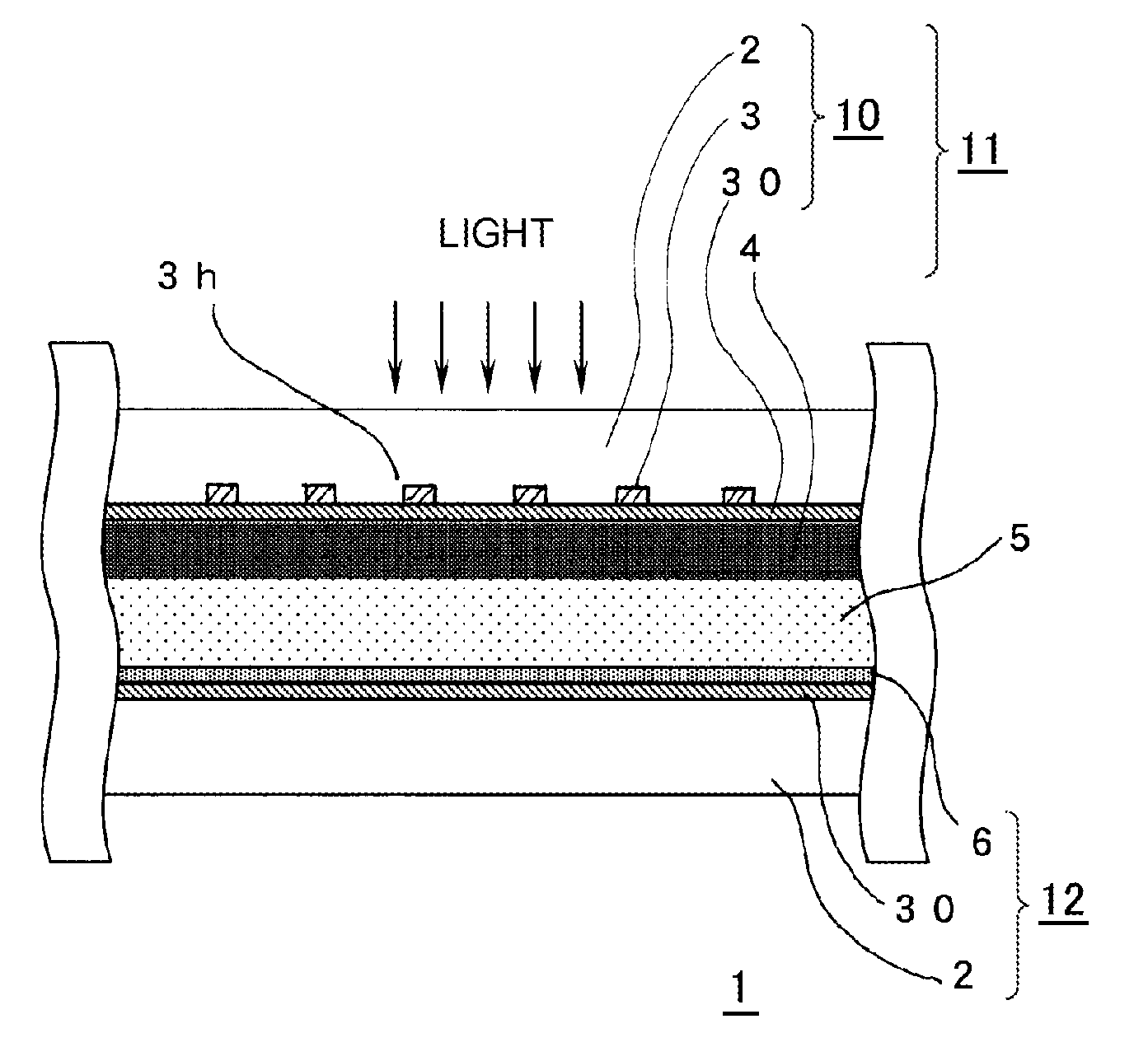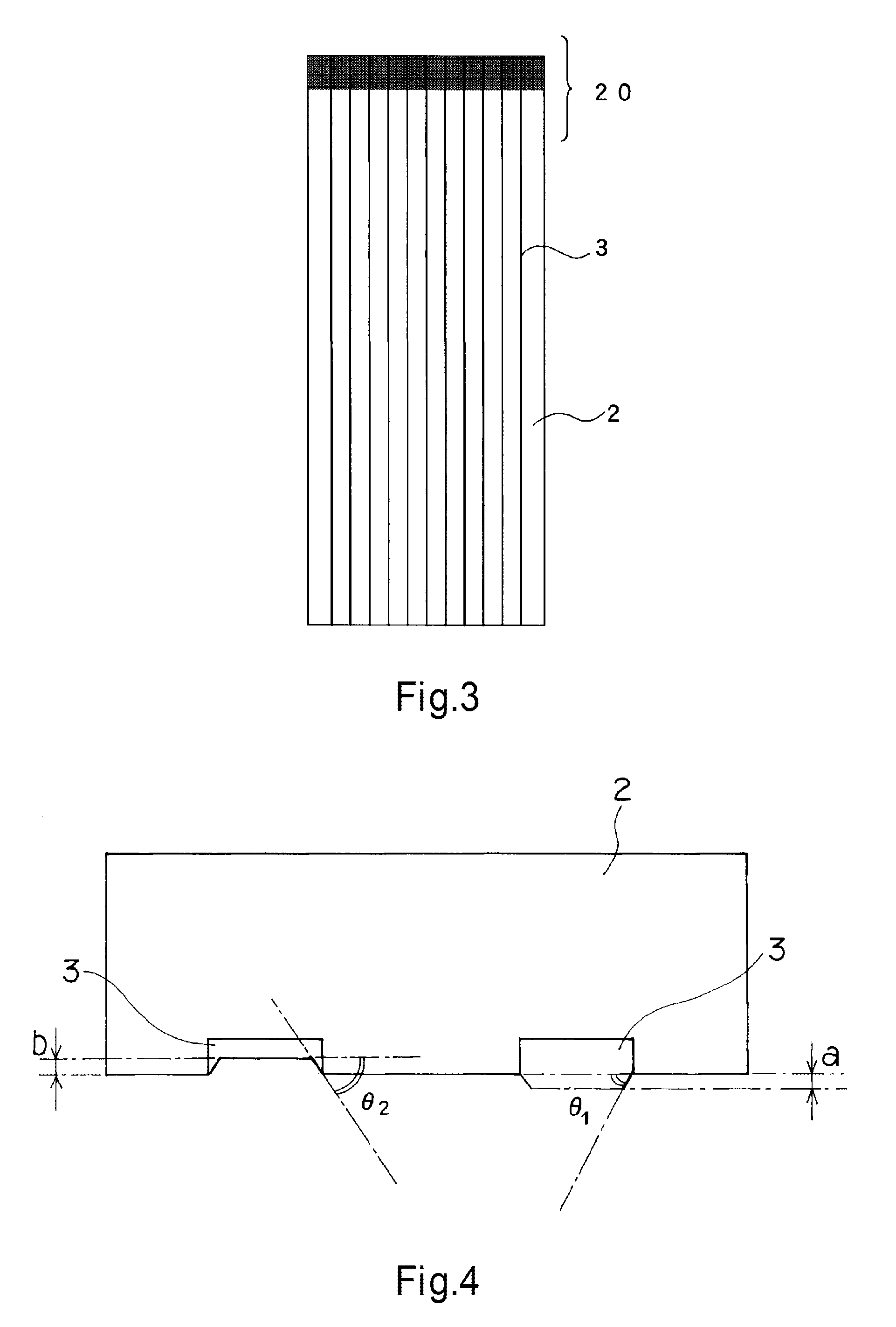Photoelectric converter, and transparent conductive substrate for the same
a technology of photoelectric converter and conductive substrate, which is applied in the direction of electrolytic capacitor, light-sensitive device, electrochemical generator, etc., can solve the problems of low productivity, radioactive contamination of nuclear energy, various global or local environmental issues, etc., and achieve excellent photoelectric conversion efficiency, improve photoelectric conversion efficiency, and high durability
- Summary
- Abstract
- Description
- Claims
- Application Information
AI Technical Summary
Benefits of technology
Problems solved by technology
Method used
Image
Examples
example 1
[0133]Initially, a TiO2 paste for constituting a semiconductor particle layer 4 was prepared.
[0134]The TiO2 paste was prepared according to a procedure with reference to “Latest Technologies for Dye-sensitizing Solar Cells” (CMC Publishing Co., Ltd.).
[0135]Titanium isopropoxide (125 ml) was gradually added dropwise to 750 ml of a 0.1 M aqueous nitric acid solution at room temperature with stirring. After the completion of dropwise addition, the mixture was transferred to a thermostat at 80° C. and was stirred for 8 hours to thereby yield a whitish semitransparent sol. This sol was gradually cooled to room temperature, filtrated through a glass filter, and measured up to 700 ml.
[0136]The above-prepared sol was transferred to an autoclave and subjected to hydrothermal treatment at 220° C. for 12 hours. Thereafter, dispersion was conducted by ultrasonic treatment for one hour. The dispersed sol was concentrated at 40° C. on an evaporator to have a TiO2 content of 20 percent by weight.
[...
examples 2 to 4
[0155]A series of photoelectric converters 1 was prepared under the conditions of Example 1, except for using materials for the conductive interconnection layer 3 shown in Table 1 below.
examples 5 to 7
[0156]A series of photoelectric converters 1 was prepared under the conditions of Example 1, except for forming the conductive interconnection layer 3 by printing using commercially available pastes of the materials shown in Table 1 below.
PUM
| Property | Measurement | Unit |
|---|---|---|
| visible wavelengths | aaaaa | aaaaa |
| thickness | aaaaa | aaaaa |
| transparency | aaaaa | aaaaa |
Abstract
Description
Claims
Application Information
 Login to View More
Login to View More - R&D
- Intellectual Property
- Life Sciences
- Materials
- Tech Scout
- Unparalleled Data Quality
- Higher Quality Content
- 60% Fewer Hallucinations
Browse by: Latest US Patents, China's latest patents, Technical Efficacy Thesaurus, Application Domain, Technology Topic, Popular Technical Reports.
© 2025 PatSnap. All rights reserved.Legal|Privacy policy|Modern Slavery Act Transparency Statement|Sitemap|About US| Contact US: help@patsnap.com



